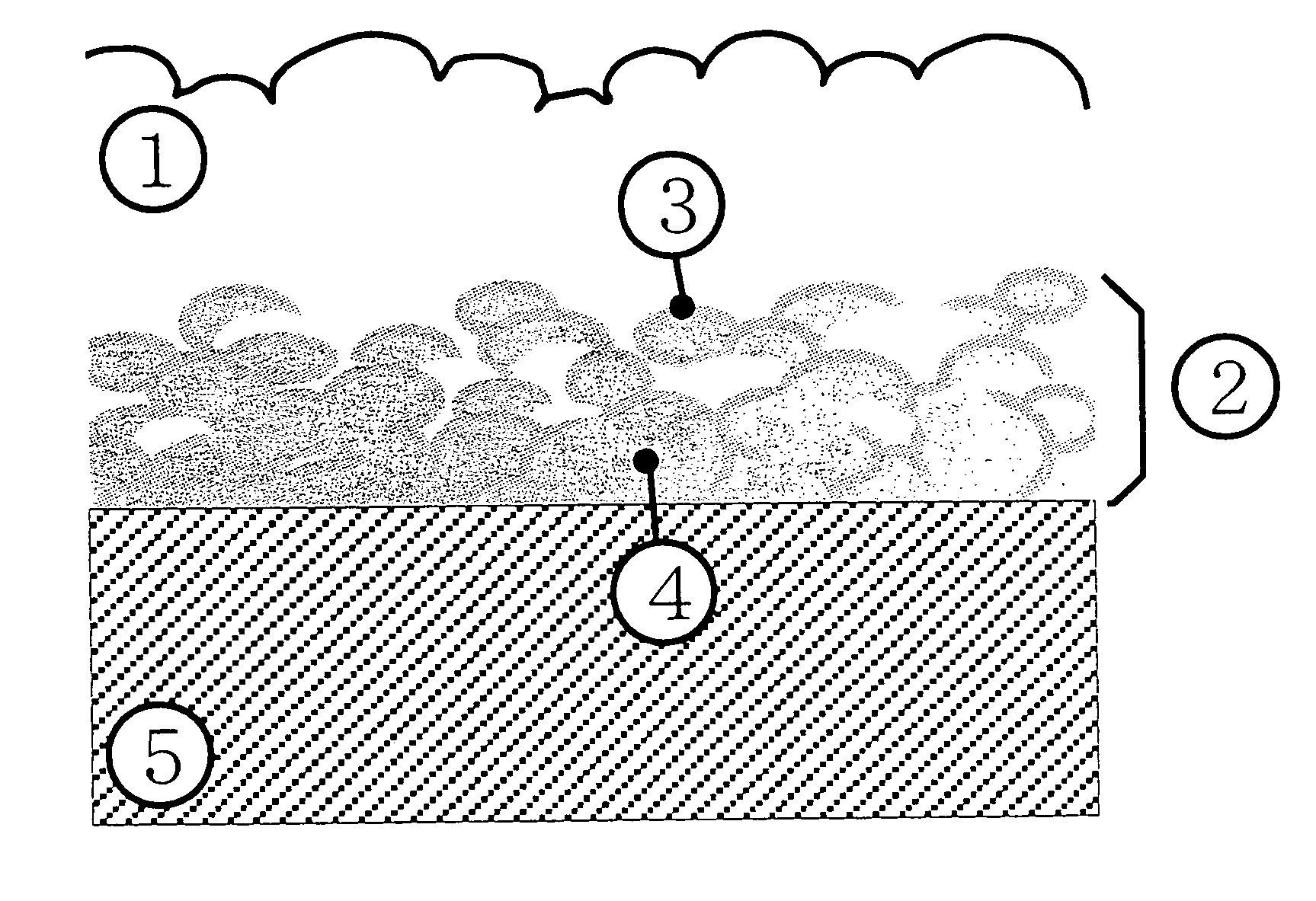Orthopedic and dental endosseous implants and their preparation method
a technology of endosseous implants and implants, which is applied in the field of orthopedic and dental endosseous implants, can solve the problems of reducing the adhesion of the coating, the method does not offer a fundamental solution to the problem of residual stress, and the problem of coating separation, etc., and achieves excellent initial anchorage to internal bone and increased adhesion strength and stability
- Summary
- Abstract
- Description
- Claims
- Application Information
AI Technical Summary
Benefits of technology
Problems solved by technology
Method used
Image
Examples
example 1
Formation of an Apatite / Titanium Composite Coating on a Titanium Substrate, and Formation of a Nitride Layer in the Titanium in the Composite Coating
[0047] While varying the mix proportions of titanium powder and hydroxyapatite powder so as to be 100% titanium and 0% apatite, 70% titanium and 30% apatite, 40% titanium and 60% apatite, and 0% titanium and 100% apatite, in that order, these materials were deposited by plasma flame spraying onto a titanium substrate by being introduced into a high frequency plasma of 4 MHz generated at an input of 12 kW, thereby forming a coating of 150 μm. During the formation of this coating, nitrogen was introduced into the plasma to form a nitride layer inside the titanium in the apatite / titanium composite coating. An adhesive strength test was conducted on the obtained product, which revealed the adhesive strength between the substrate and coating to be about 40 MPa.
example 2
Formation of an Apatite / Titanium Composite Coating on a Titanium Alloy Substrate, and Formation of a Nitride Layer in the Titanium in the Composite Coating
[0048] While varying the mix proportions of titanium powder and hydroxyapatite powder so as to be 100% titanium and 0% apatite, 70% titanium and 30% apatite, 40% titanium and 60% apatite, and 0% titanium and 100% apatite, in that order, these materials were deposited by plasma flame spraying onto a titanium alloy substrate by being introduced into a high frequency plasma of 4 MHz generated at an input of 17 kW, thereby forming a coating of 150 μm. During the formation of this coating, nitrogen was introduced into the plasma to form a nitride layer inside the titanium in the apatite / titanium composite coating. An adhesive strength test was conducted on the obtained product, which revealed the adhesive strength between the substrate and coating to be about 50 MPa.
example 3
Formation of an Apatite / Titanium Composite Coating on a Titanium Alloy Substrate, and Formation of a Nitride Layer in the Titanium in the Composite Coating
[0049] While varying the mix proportions of titanium powder and hydroxyapatite powder so as to be 100% titanium and 0% apatite, 70% titanium and 30% apatite, 40% titanium and 60% apatite, and 0% titanium and 100% apatite, in that order, these materials were deposited by plasma flame spraying onto a titanium alloy substrate by being introduced into a high frequency plasma of 4 MHz generated at an input of 27 kW, thereby forming a coating of 150 μm. During the formation of this coating, nitrogen was introduced into the plasma to form a nitride layer inside the titanium in the apatite / titanium composite coating. An adhesive strength test was conducted on the obtained product, which revealed the adhesive strength between the substrate and coating to be about 65 MPa.
PUM
| Property | Measurement | Unit |
|---|---|---|
| particle size | aaaaa | aaaaa |
| particle size | aaaaa | aaaaa |
| particle size | aaaaa | aaaaa |
Abstract
Description
Claims
Application Information
 Login to View More
Login to View More - R&D
- Intellectual Property
- Life Sciences
- Materials
- Tech Scout
- Unparalleled Data Quality
- Higher Quality Content
- 60% Fewer Hallucinations
Browse by: Latest US Patents, China's latest patents, Technical Efficacy Thesaurus, Application Domain, Technology Topic, Popular Technical Reports.
© 2025 PatSnap. All rights reserved.Legal|Privacy policy|Modern Slavery Act Transparency Statement|Sitemap|About US| Contact US: help@patsnap.com


